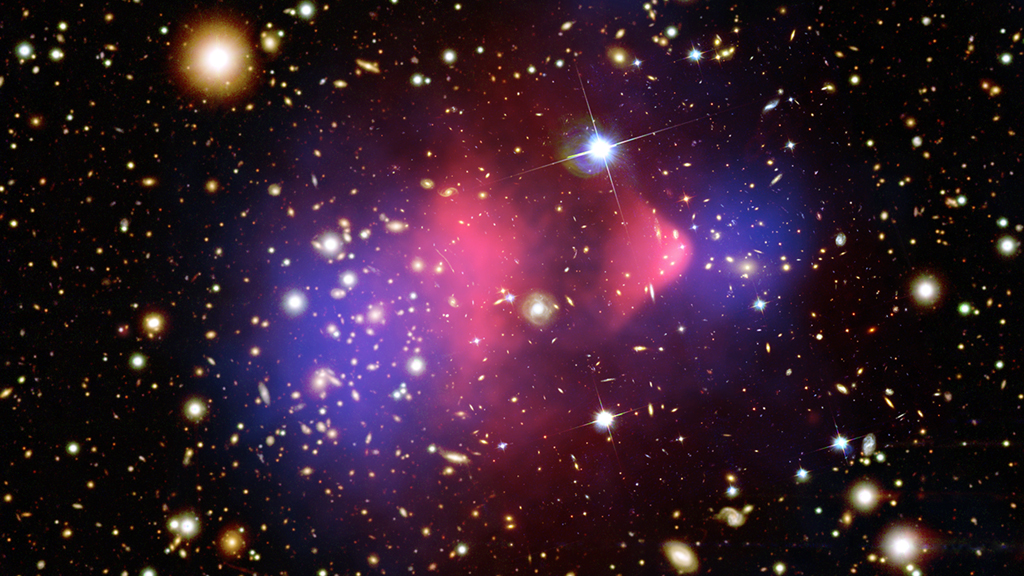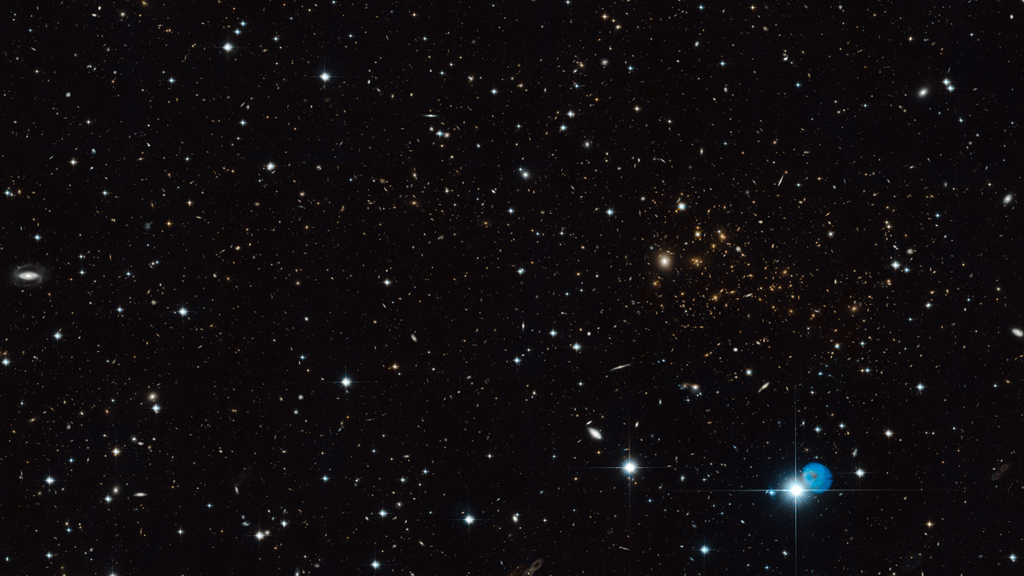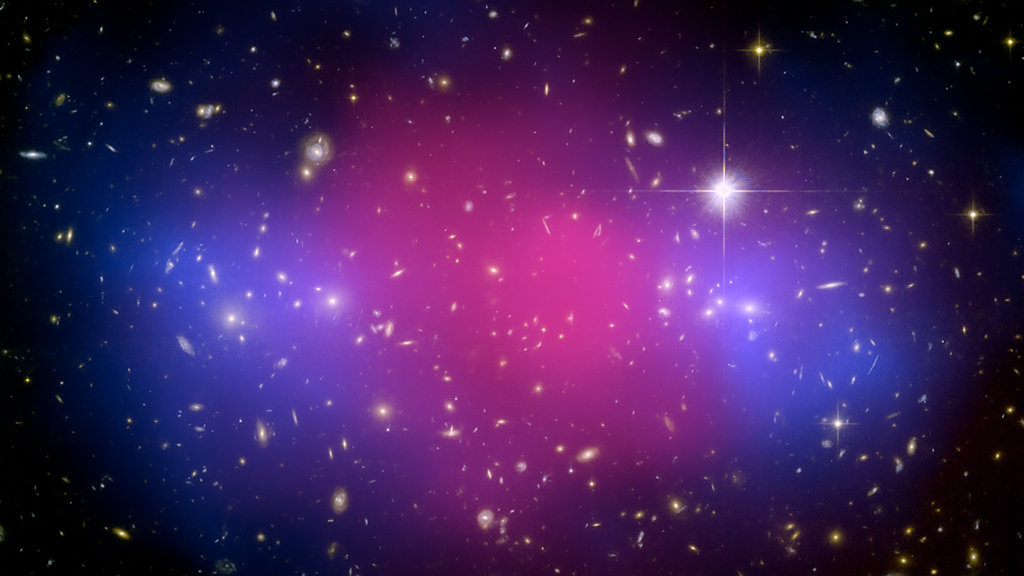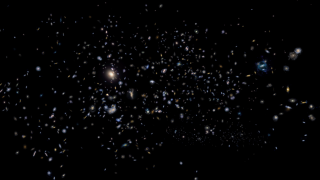Universe
ID: 11445

When hot gas and millions of stars coalesce into galaxies, the gravity that glues these systems together may also recruit thousands of other galaxies to form one massive galaxy cluster. Stretching across millions of light-years and swarming with up to trillions of stars, galaxy clusters comprise the largest gravitationally bound objects in the known universe. Their sheer size and high composition of mysterious dark matter make them prized research subjects for astrophysicists. Using images of galaxy clusters from NASA’s Hubble Space Telescope, scientists have calculated that dark matter makes up approximately 23 percent of all matter and energy in space. These measurements impart clues into the ways dark matter may be driving the expansion of the universe after the Big Bang. Watch the video for a look inside a galaxy cluster.



Cosmic Clumps




Related Story
Story Credits
Please give credit for this item to:
NASA's Scientific Visualization Studio
Cover image courtesy of NASA/CXC/M. Markevitch et al. and NASA/STScI/Magellan/University of Arizona/D. Clowe et al. and NASA/STScI/ESO/WFI/Magellan/University of Arizona/D. Clowe et al.
MACS J0717 image courtesy of NASA/ESA/University of Hawaii/LAM/Harald Ebeling and Jean-Paul Kneib
MACS J0025 image courtesy of NASA/CXC/Stanford/S. Allen and NASA/STScI/UCSB/M. Bradac
Abell 1689 image courtesy of NASA/ESA/STScI/AURA/Dominion Astrophysical Observatory/JHU/J. Blakeslee and H. Ford
NASA's Scientific Visualization Studio
Cover image courtesy of NASA/CXC/M. Markevitch et al. and NASA/STScI/Magellan/University of Arizona/D. Clowe et al. and NASA/STScI/ESO/WFI/Magellan/University of Arizona/D. Clowe et al.
MACS J0717 image courtesy of NASA/ESA/University of Hawaii/LAM/Harald Ebeling and Jean-Paul Kneib
MACS J0025 image courtesy of NASA/CXC/Stanford/S. Allen and NASA/STScI/UCSB/M. Bradac
Abell 1689 image courtesy of NASA/ESA/STScI/AURA/Dominion Astrophysical Observatory/JHU/J. Blakeslee and H. Ford
Short URL to share this page:
https://svs.gsfc.nasa.gov/11445
Keywords:
SVS >> App
NASA Science >> Universe
https://svs.gsfc.nasa.gov/11445
Keywords:
SVS >> App
NASA Science >> Universe








